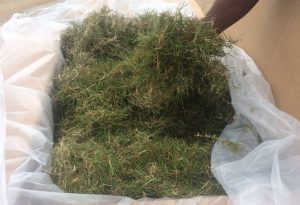1. Can paspalum be irrigated with salt water directly from the ocean?
No. Even though paspalum is salt tolerant, it cannot be irrigated with ocean water. The maximum recommended salt content for regular irrigation water is 5,500 ppm. Read more about turfgrass salinity.
2. Can paspalum putting greens achieve the same Stimpmeter readings (speed) as ultradwarf bermudagrass?
Yes. With the correct management practices, paspalum putting greens speeds can equal the same speeds as those of any other turfgrass including ultradwarf bermudagrass.
3. Can you irrigate paspalum with water that has very little salt content?
Paspalum does not require salt to thrive. It can be irrigated with fresh potable drinking water. While known for its salt tolerance, salt-affected sites are not required.
4. Is paspalum disease-prone?
Like any turfgrass, paspalum can contract disease when environmental conditions deteriorate. Paspalum is susceptible to the same diseases as zoysia and bermudagrass. Proactive monitoring for disease as well as a preventative fungicide program will help prevent severe disease outbreaks.
5. Can paspalum be overseeded with ryegrass during cooler times of the year?
Yes. Paspalum can be overseeded. The recommended planting rate is six hundred pounds of ryegrass per acre (660 kilograms per hectare) on fairways and roughs. Greens and tees can be planted at ten to thirty pounds per one thousand square feet (4.5 to 14 kilograms per 100 square meters). Read more about overseeding.
6. Can paspalum be used on athletic fields?
Yes. Paspalum is very durable and can hold up to heavy foot traffic better than most bermudagrass varieties. Paspalum’s ability to recover quickly from injury makes it ideal for sports like soccer, football, and baseball.
7. How does paspalum perform in the shade?
Paspalum is moderately shade tolerant. It does require at least five to six hour of sunlight a day.
8. In what forms is paspalum available?
Paspalum is sold as seed, sod, and sprigs (stolons).
9. Does paspalum require lots of fertilizer?
No. In fact, after establishment, paspalum requires less nitrogen than zoysia and bermudagrass varieties. Depending on the location, as little as two pounds of nitrogen per one thousand square feet (one kilogram per 100 square meters) is needed to maintain a stand of paspalum successfully.
10. At what mowing heights can you maintain paspalum?
Paspalum is unique in that it can be mowed low enough to maintain championship putting greens and grown high enough to produce a challenging rough on a golf course. Read more about the versatility of paspalum.
11. Geographically, where can paspalum be grown?
Paspalum may be planted in nearly any warm-season climate. It is used for projects in desert conditions in Egypt and the Middle East; in humid, tropical conditions in Southeast Asia, Florida and Hawaii; and throughout the warm season regions of the United States from California to South Carolina.
12. Where can I learn more about paspalum?
Ron R. Duncan, Ph.D.; Robert N. Carrow, Ph.D.; and Paul L. Raymer, Ph.D. are noted experts on paspalum and have published extensively on the topic.



